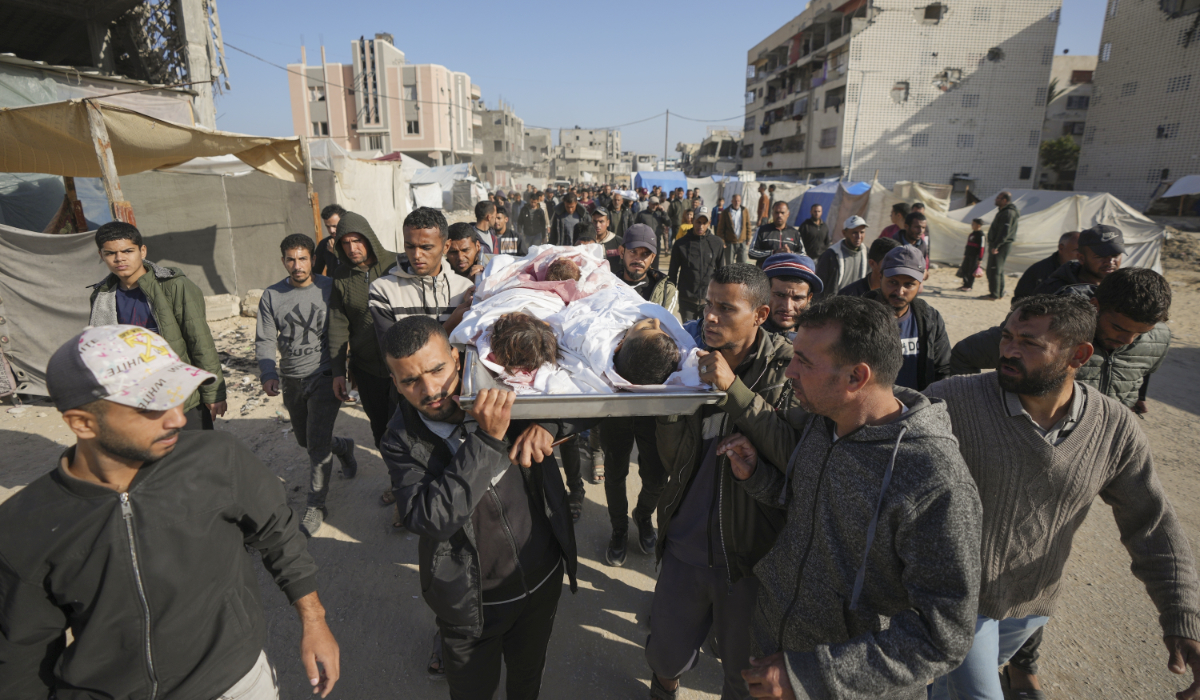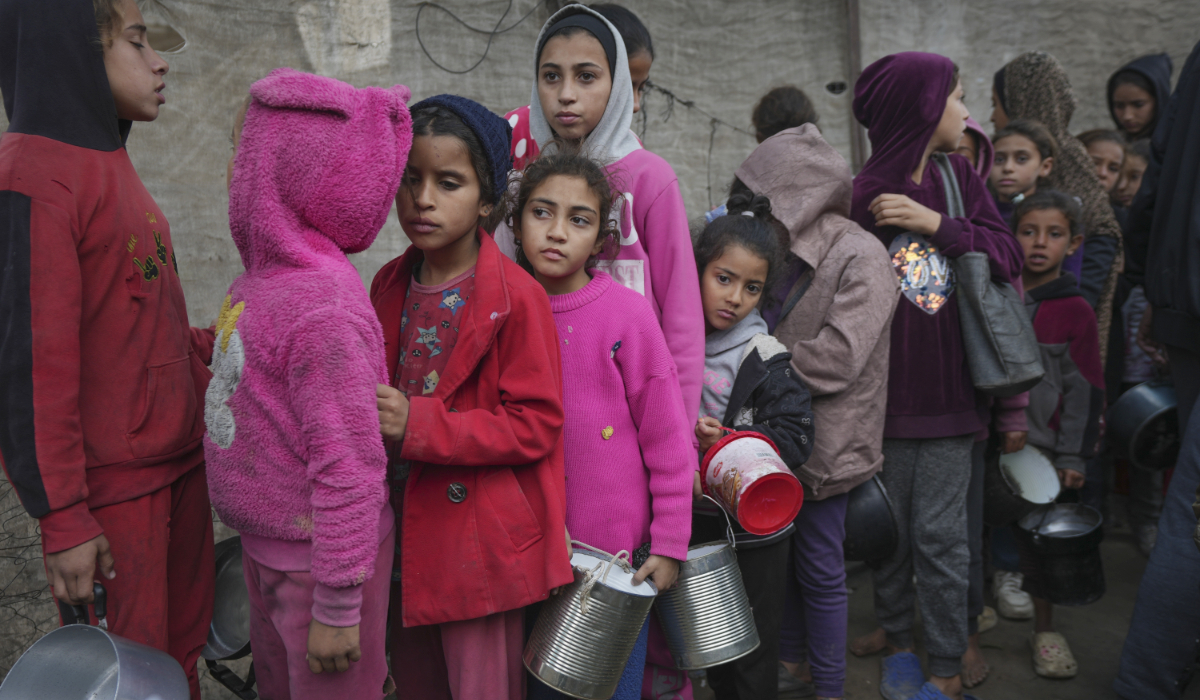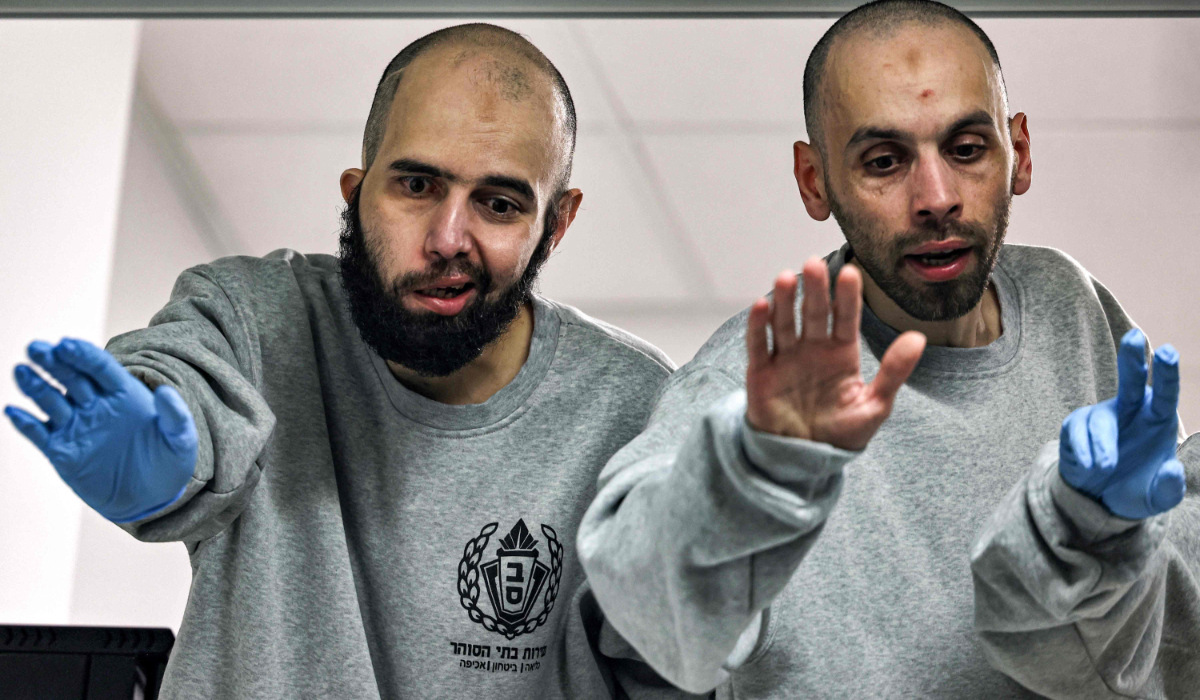JERUSALEM: With Israel’s defense minister announcing a “new phase” of the war and an apparent Israeli attack setting off explosions in electronic devices in Lebanon, the specter of all-out combat between Israel and Hezbollah seems closer than ever before.
Hopes for a diplomatic solution to the conflict appear to be fading quickly as Israel signals a desire to change the status quo in the country’s north, where it has exchanged cross-border fire with Hezbollah since the Lebanese militant group began attacking on Oct. 8, a day after the war’s opening salvo by Hamas.
In recent days, Israel has moved a powerful fighting force up to the northern border, officials have escalated their rhetoric, and the country’s security Cabinet has designated the return of tens of thousands of displaced residents to their homes in northern Israel an official war goal.
Here’s a look at how Israel is preparing for a war with Lebanon:
Troops drawn from Gaza to the northern border
While the daily fighting between Israel and Hezbollah has escalated on several occasions, the bitter enemies have been careful to avoid an all-out war.
That appears to be changing — especially after pagers, walkie-talkies, solar equipment and other devices exploded in Lebanon on Tuesday and Wednesday, killing at least 20 and wounding thousands in a sophisticated attack Hezbollah blamed on Israel.
“You don’t do something like that, hit thousands of people, and think war is not coming,” said retired Israeli Brig. Gen. Amir Avivi, who leads Israel Defense and Security Forum, a group of hawkish former military commanders. “Why didn’t we do it for 11 months? Because we were not willing to go to war yet. What’s happening now? Israel is ready for war.”
As fighting in Gaza has slowed, Israel has fortified forces along the border with Lebanon, including the arrival this week of a powerful army division that took part in some of the heaviest fighting in Gaza.
The 98th Division is believed to include thousands of troops, including paratrooper infantry units and artillery and elite commando forces specially trained for operations behind enemy lines. Their deployment was confirmed by an official with knowledge of the matter who spoke on the condition of anonymity to discuss troop movements.
The division played a key role in Gaza, spearheading the army’s operations in the southern city of Khan Younis, a Hamas stronghold. The offensive inflicted heavy losses on Hamas fighters and tunnels, but also wreaked massive damage, sent thousands of Palestinians fleeing and resulted in scores of civilian deaths. Israel says Hamas endangers civilians by hiding in residential areas.
The military also said it staged a series of drills this week along the border.
“The mission is clear,” said Maj. Gen. Ori Gordin, who heads Israel’s Northern Command. “We are determined to change the security reality as soon as possible.”
A ‘new phase’ of war
The military movements have been accompanied by heightened rhetoric from Israel’s leaders, who say their patience is running thin.
Defense Minister Yoav Gallant on Wednesday night declared the start of a ” new phase” of the war as Israel turns its focus toward Hezbollah. “The center of gravity is shifting to the north by diverting resources and forces,” he said.
He spoke a day after Israel’s Cabinet made the return of displaced residents to their homes in northern Israel a formal goal of the war. The move was largely symbolic — Israeli leaders have long pledged to bring those residents home. But elevating the significance of the aim signaled a tougher stance.
After meeting Wednesday with top security officials, Prime Minister Benjamin Netanyahu declared: “We will return the residents of the north securely to their homes.”
Netanyahu delivered a similarly tough message with a top US envoy sent to the region this week to soothe tensions.
An official with knowledge of the encounter told The Associated Press that the envoy, Amos Hochstein, told Netanyahu that intensifying the conflict with Hezbollah would not help return evacuated Israelis back home.
Netanyahu, according to a statement from his office, told Hochstein that residents cannot return without “a fundamental change in the security situation in the north.” The statement said that while Netanyahu “appreciates and respects” US support, Israel will “do what is necessary to safeguard its security.”
Is war inevitable?
Israeli media reported Wednesday that the government has not yet decided whether to launch a major offensive in Lebanon.
Much, it seems, will depend on Hezbollah’s response. The group’s leader, Hassan Nasrallah, is expected to deliver a major speech on Thursday.
But public sentiment in Israel seems to be supportive of tougher action against Hezbollah.
A recent poll by the Israeli Democracy Institute, a Jerusalem think tank, found that 67 percent of Jewish respondents thought Israel should intensify its response to Hezbollah. The majority believed Israel should launch a deep offensive that includes striking Lebanese infrastructure.
“There’s a lot of pressure from the society to go to war and win,” said Avivi, the retired general. “Unless Hezbollah tomorrow morning says, ‘OK, we got the message. We’re pulling out of south Lebanon,’ war is imminent.”
Such a war would almost certainly prove devastating to both sides.
Already, more than 500 people have been killed in Lebanon by Israeli strikes since Oct. 8, most of them fighters with Hezbollah and other armed groups but also more than 100 civilians. In northern Israel, at least 23 soldiers and 26 civilians have been killed by strikes from Lebanon.
Israel inflicted heavy damage on Lebanon during a monthlong war against Hezbollah in 2006 that ended in a stalemate. Israeli leaders have threatened even tougher action this time around, vowing to repeat the scenes of destruction from Gaza in Lebanon.
But Hezbollah also has built up its capabilities since 2006. Hezbollah has an estimated 150,000 rockets and missiles, some believed to have guidance systems that could threaten sensitive targets in Israel. It has also developed an increasingly sophisticated fleet of drones.
Capable of striking all parts of Israel, Hezbollah could bring life in Israel to a standstill and send hundreds of thousands of Israelis fleeing.
A war with Hezbollah may be looming. Is Israel prepared?
https://arab.news/2kdnh
A war with Hezbollah may be looming. Is Israel prepared?

- Israeli media reported Wednesday that the government has not yet decided whether to launch a major offensive in Lebanon





























